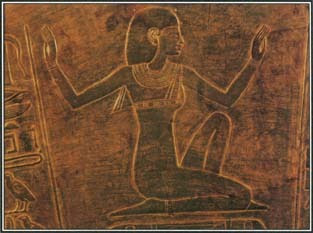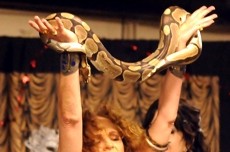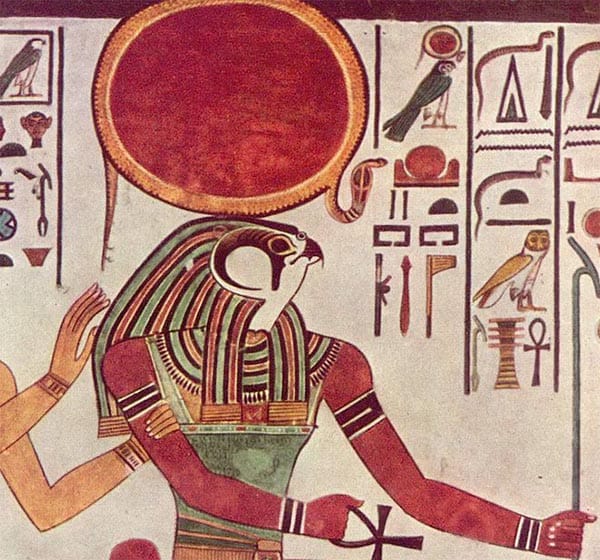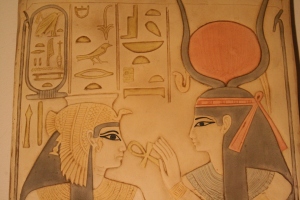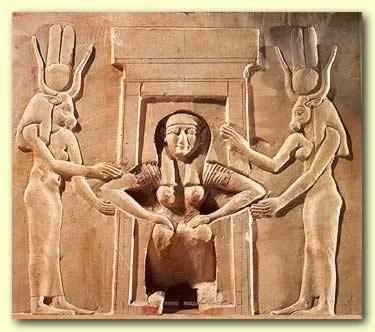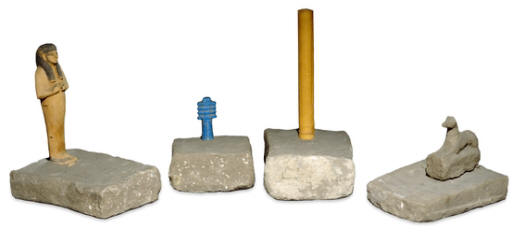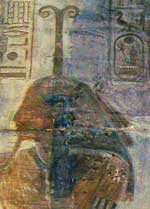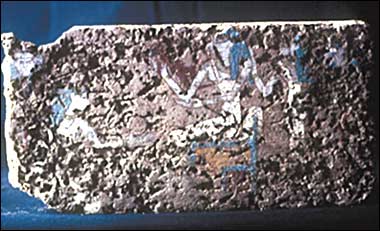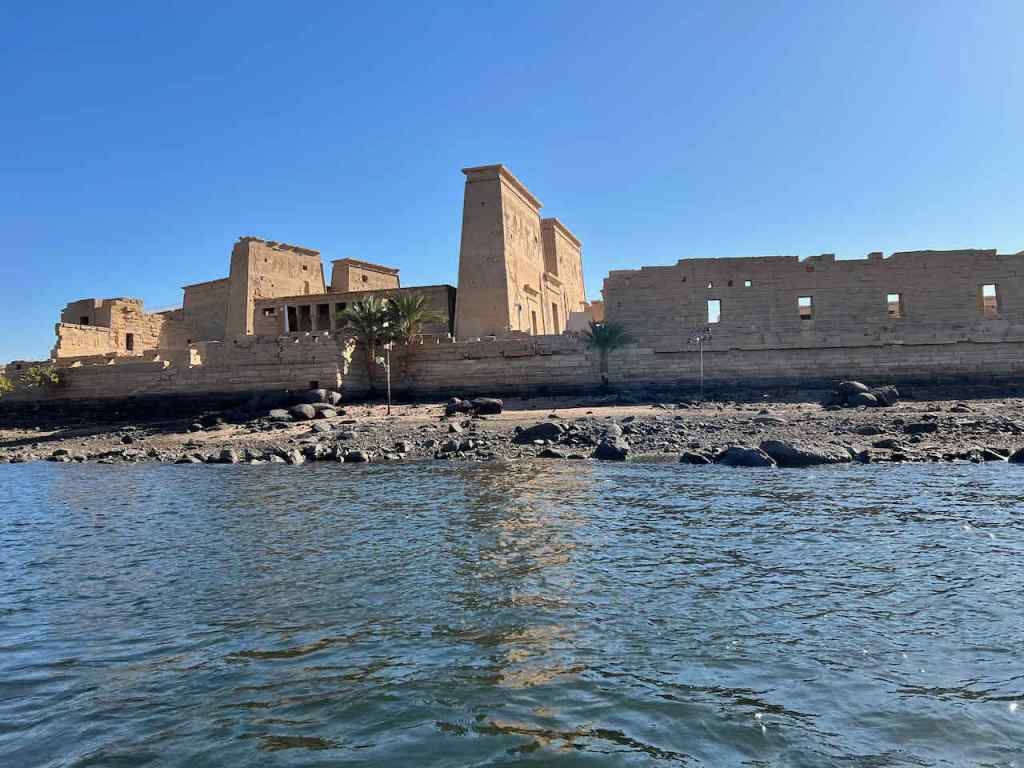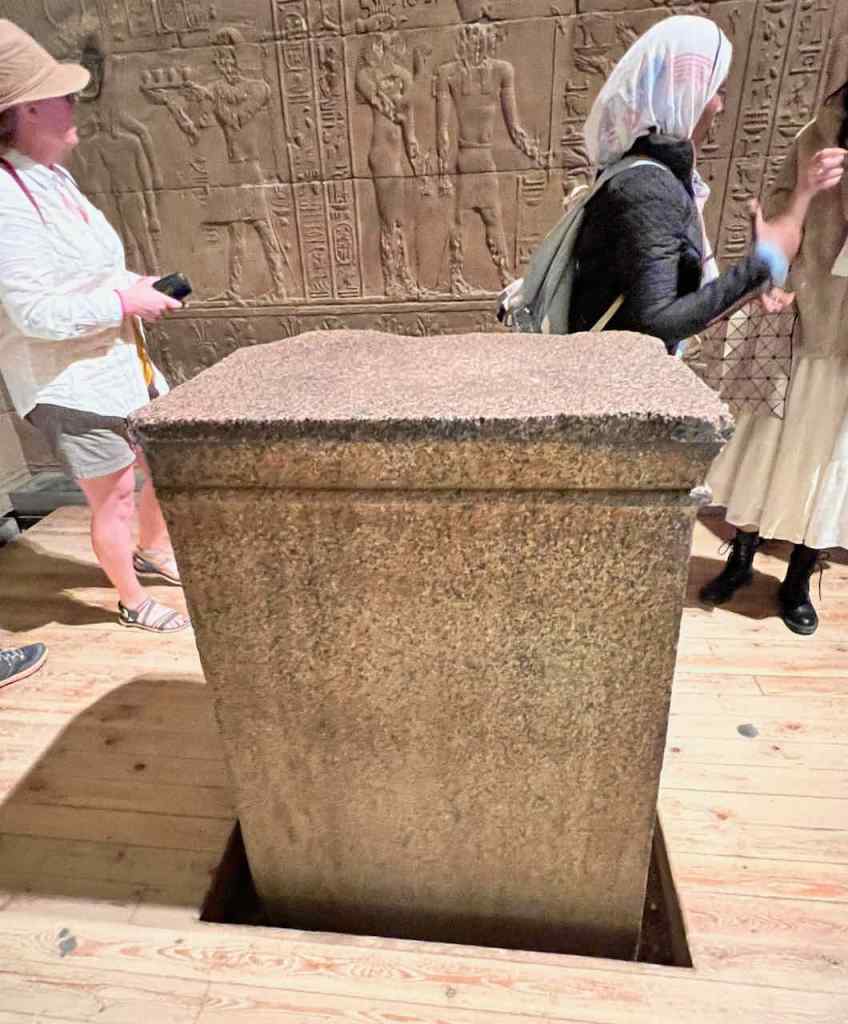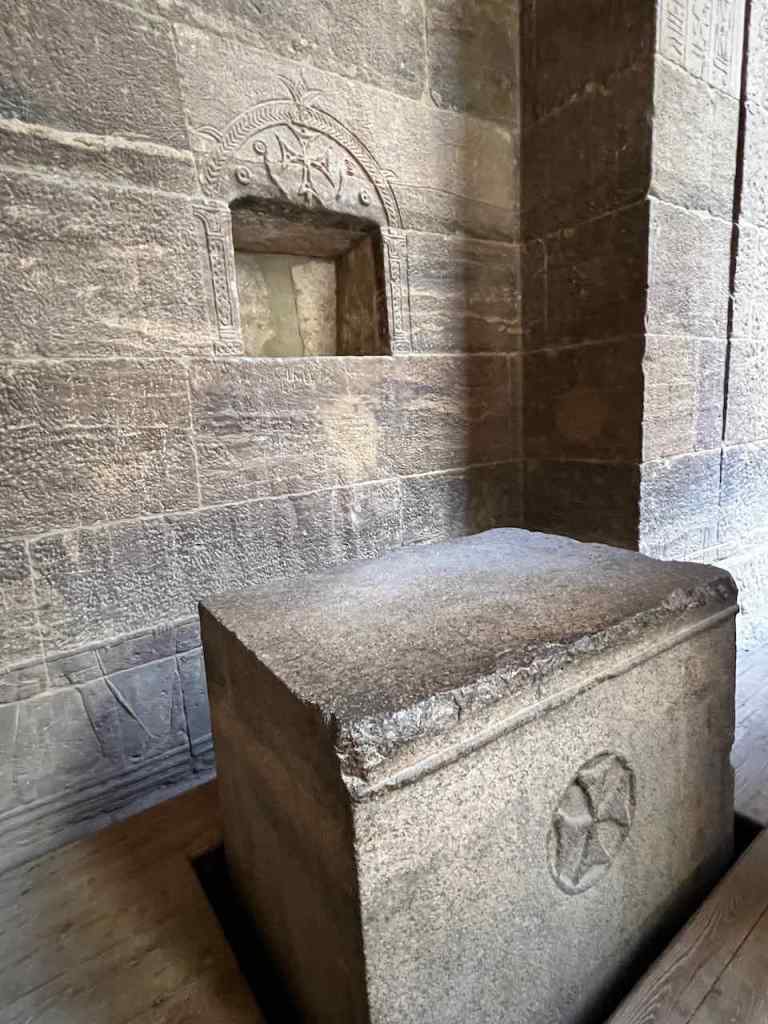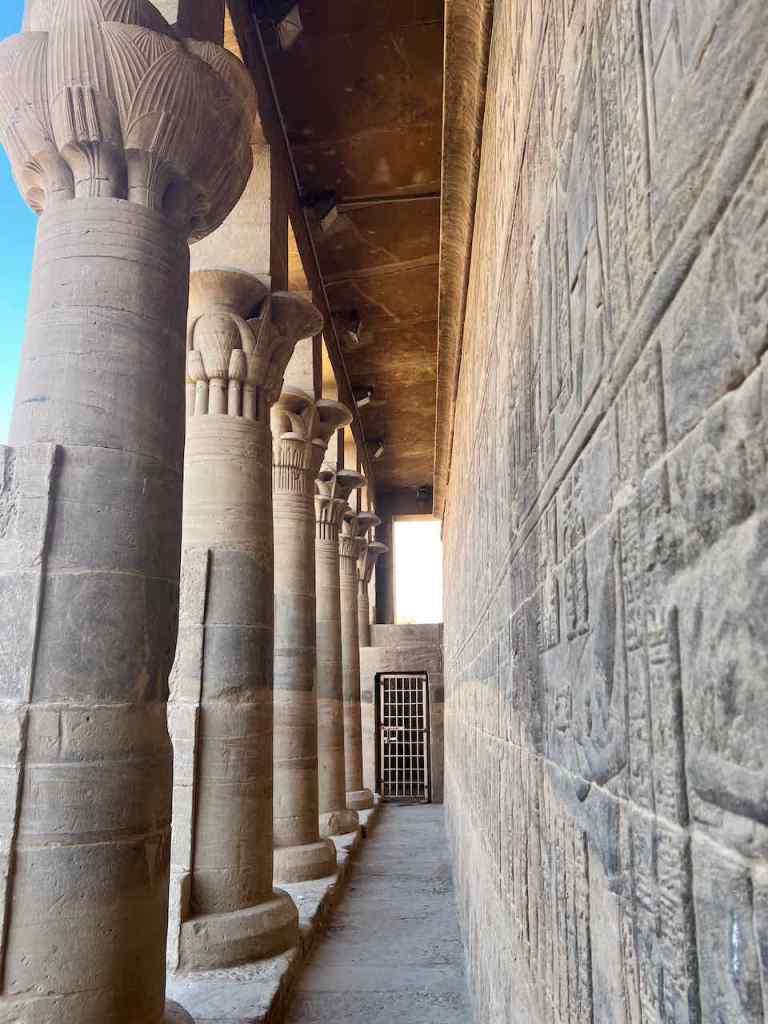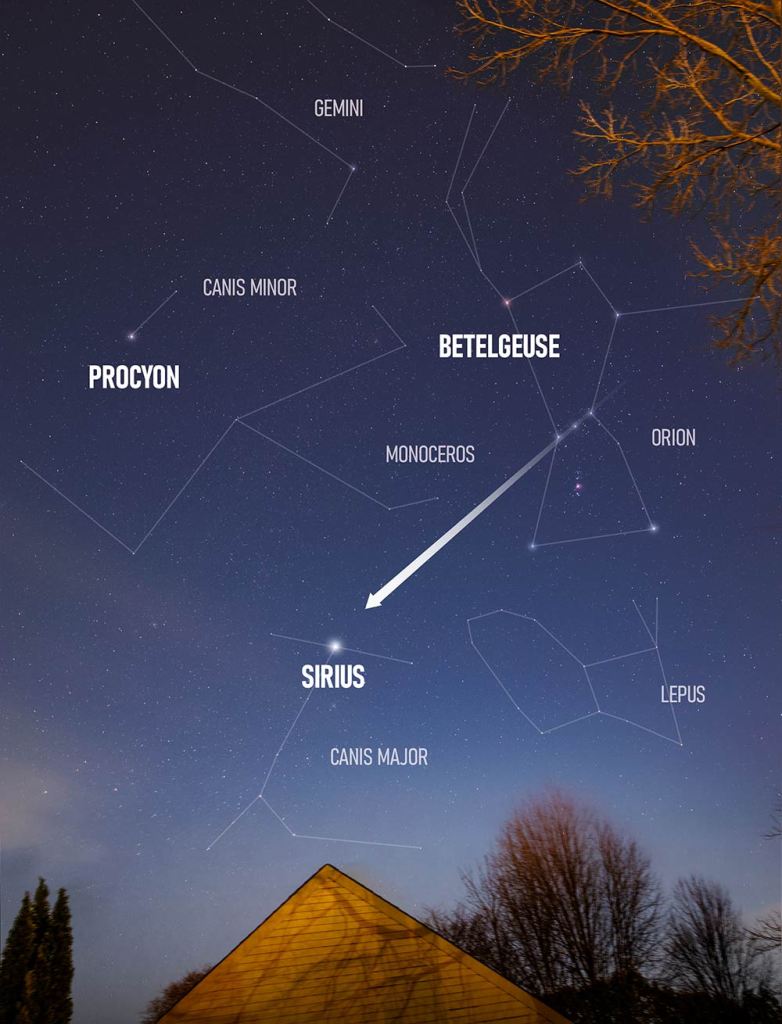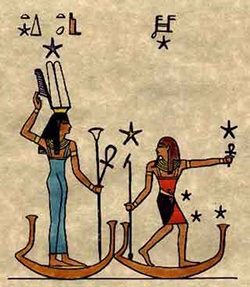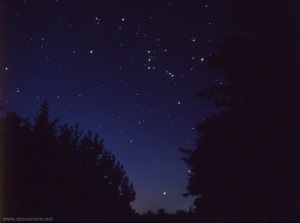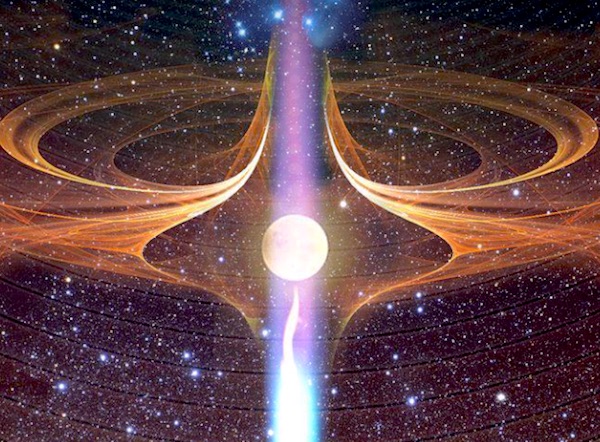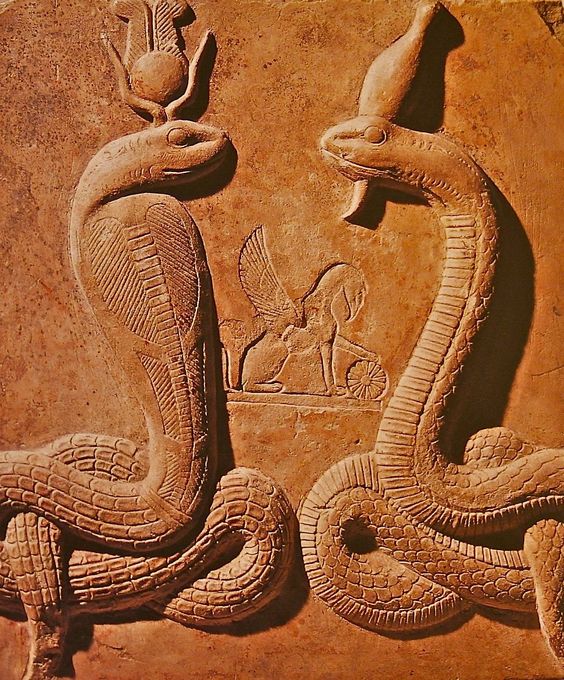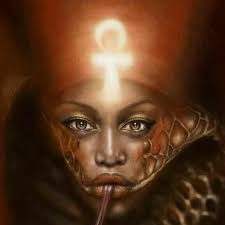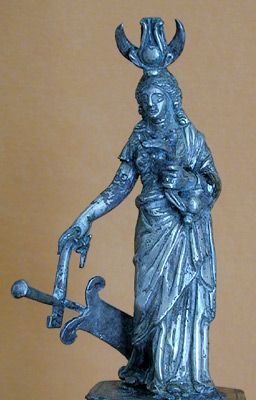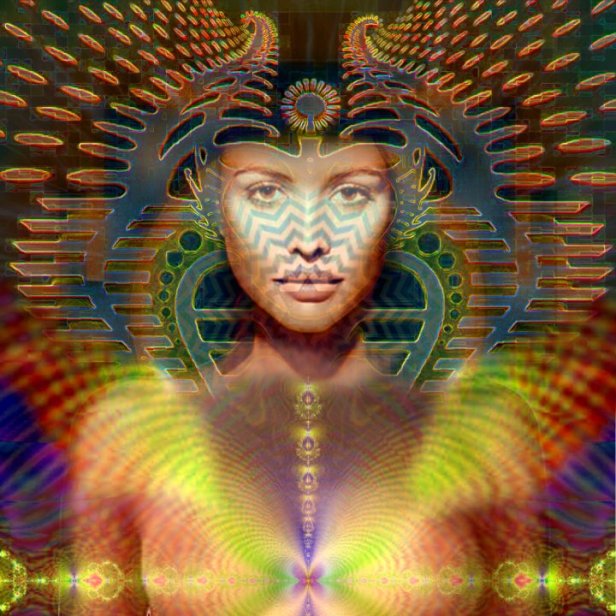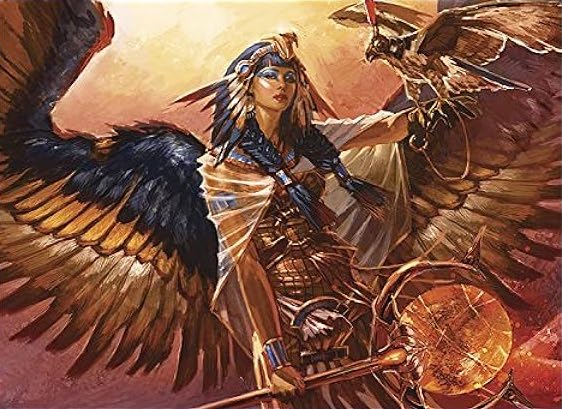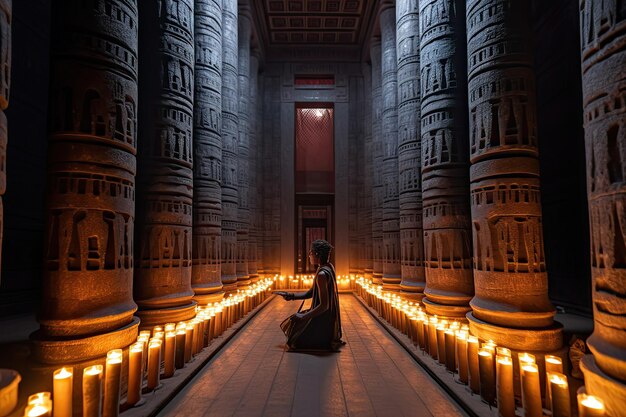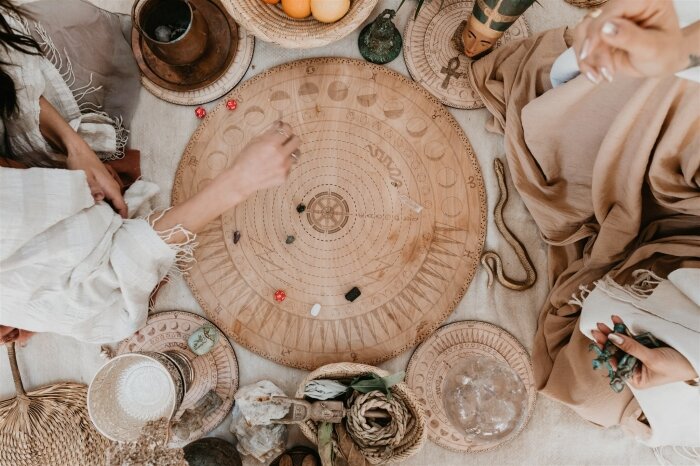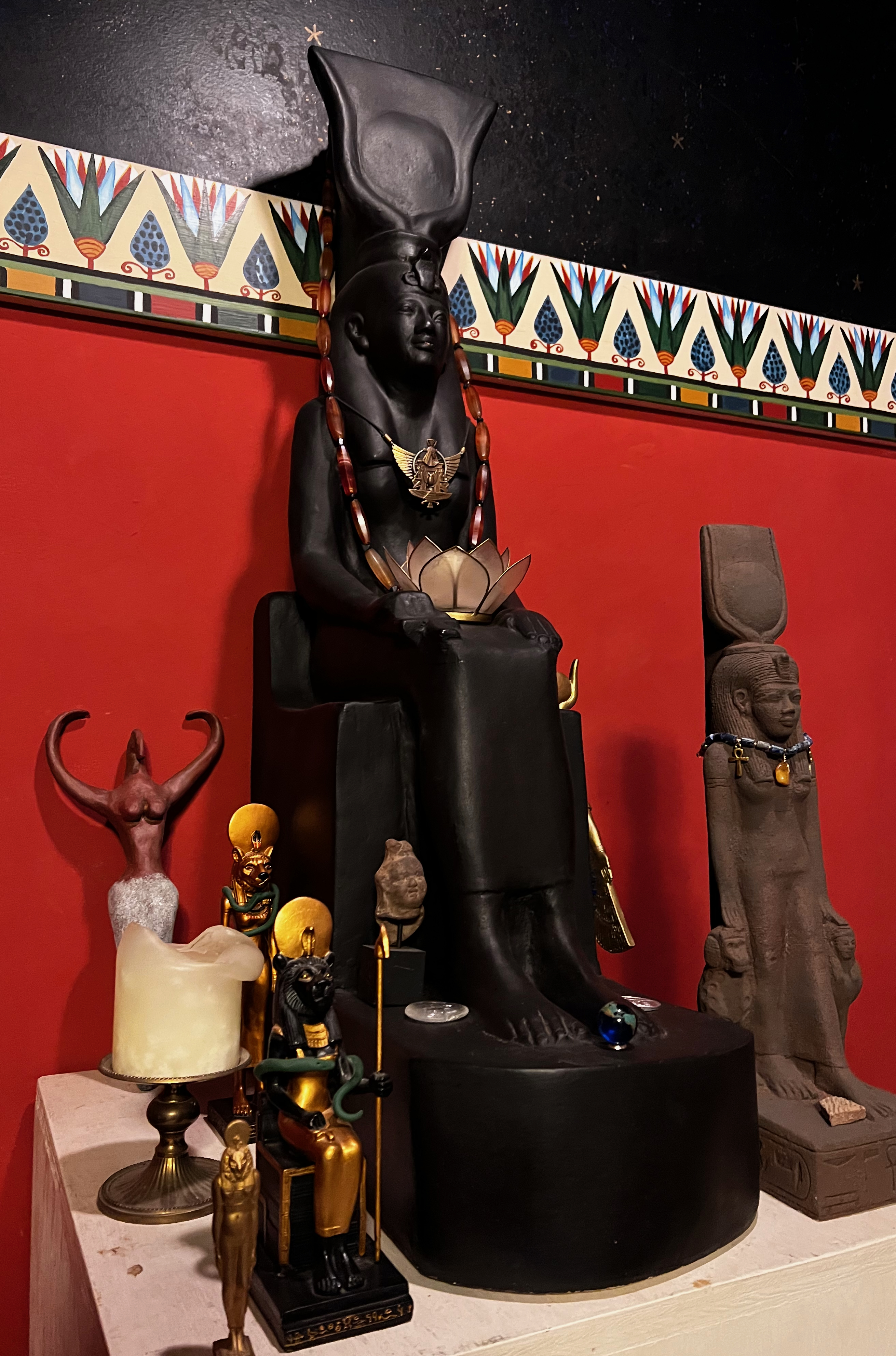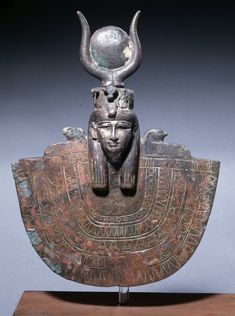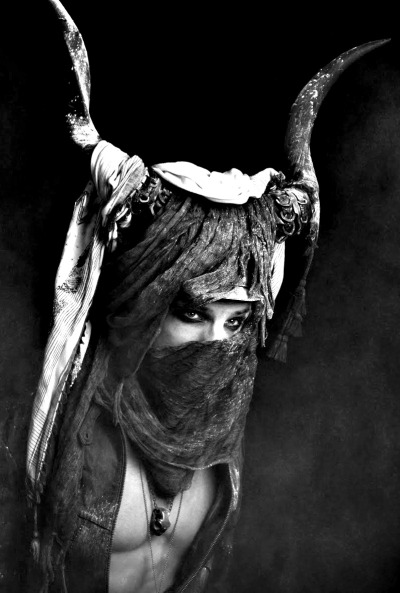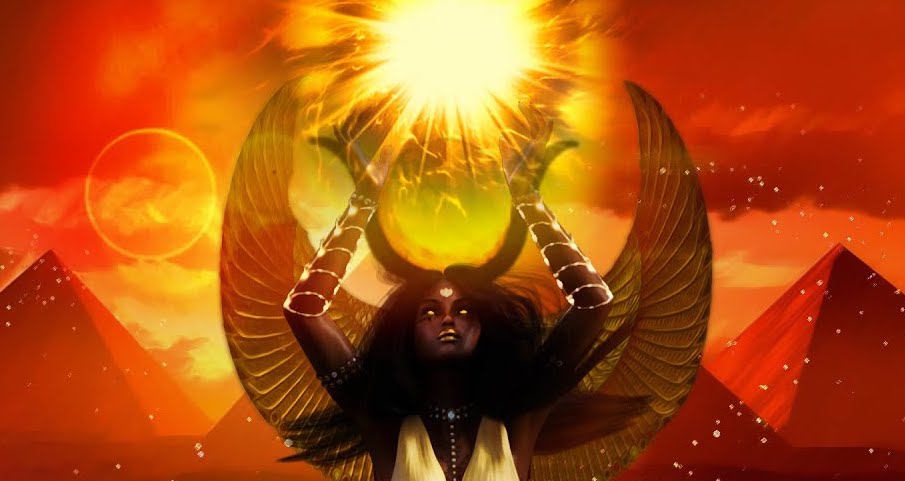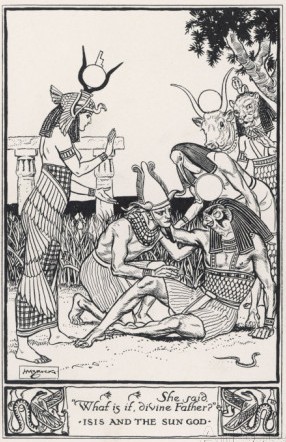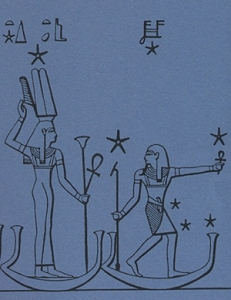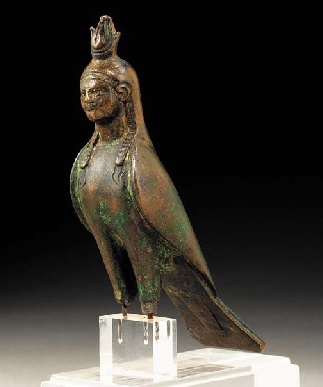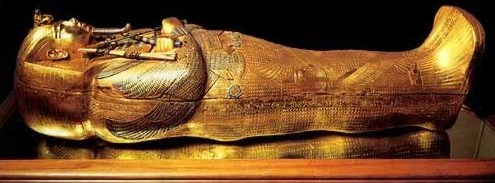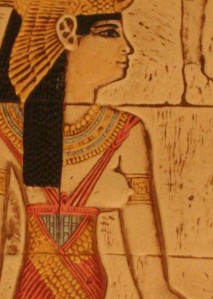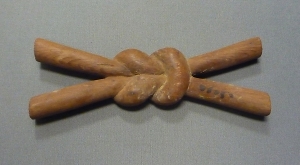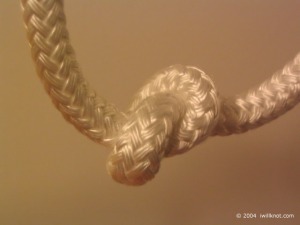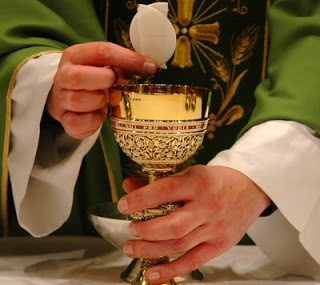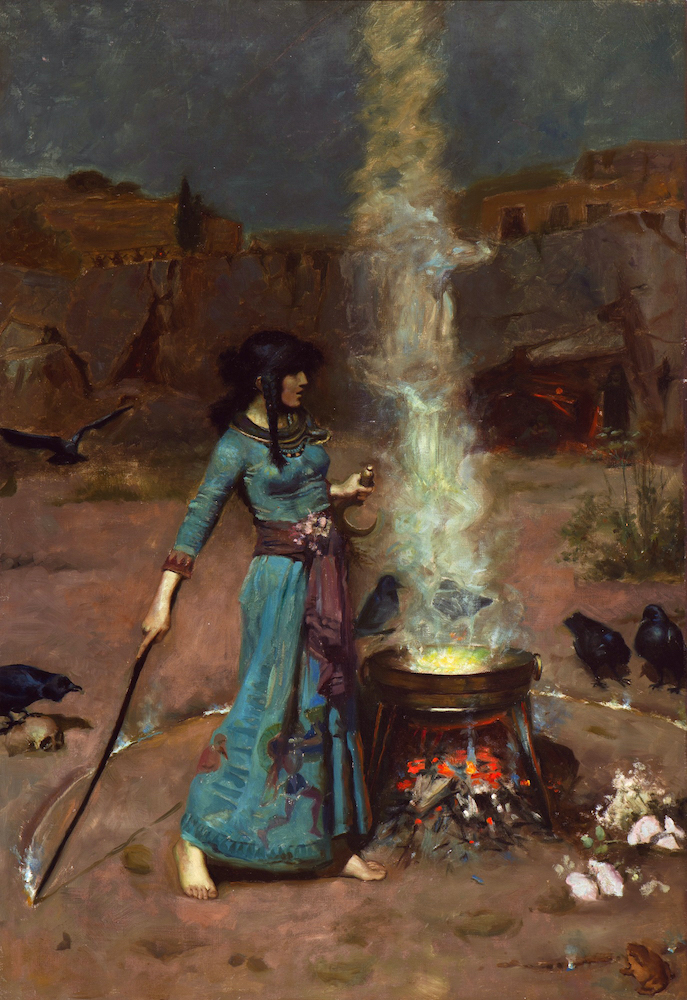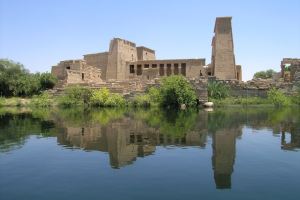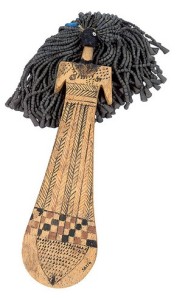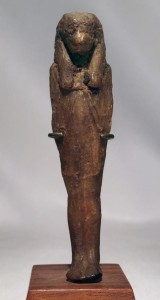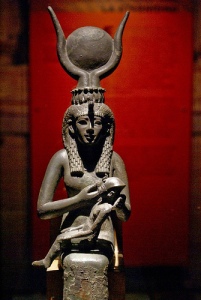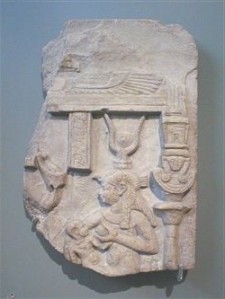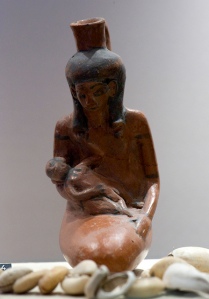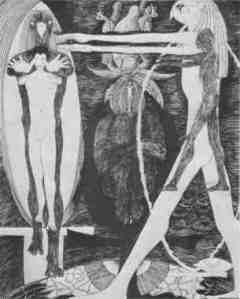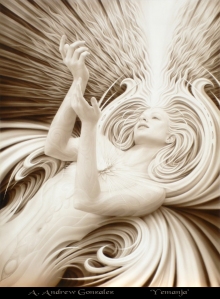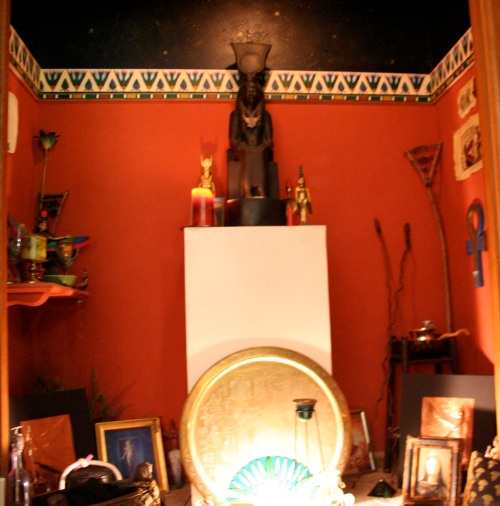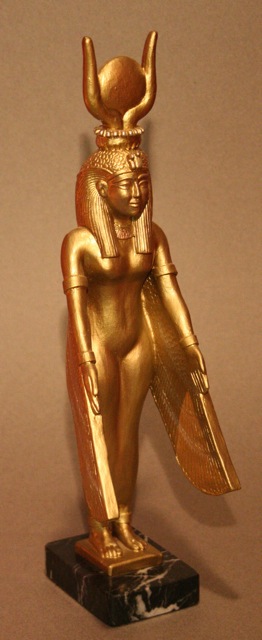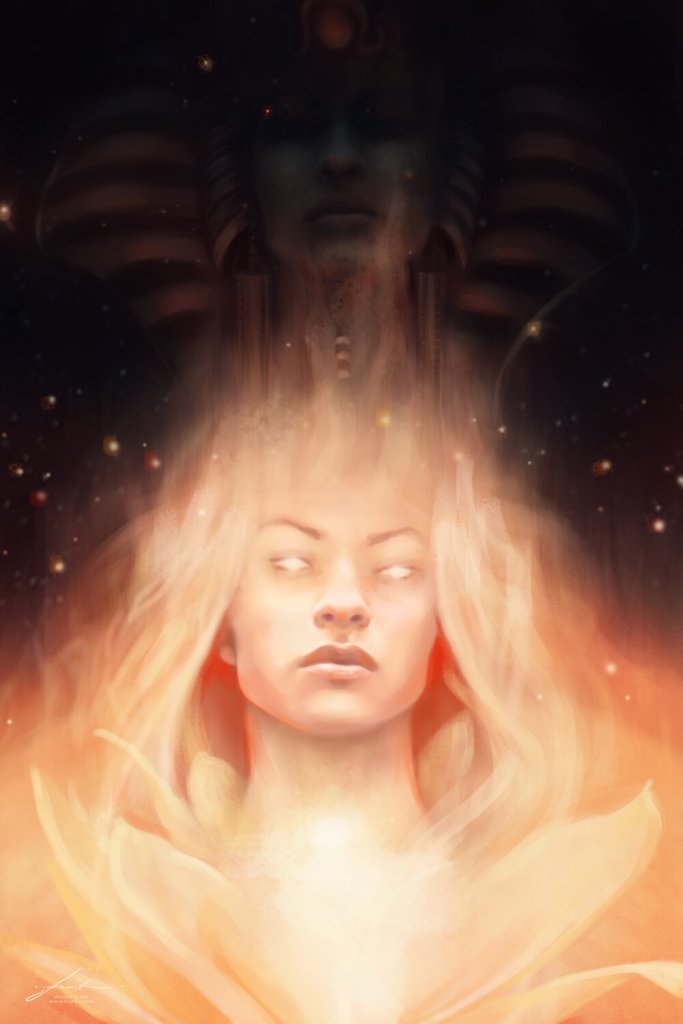
This is an important Isis myth. It almost always gets overshadowed by the main Isis and Osiris myth, the murder of Osiris and Isis’ search for Him. But this is the Isis myth that is, for many, the most unsettling when we are first learning our Isis lore; and that is the tale of how Isis tricked the Sun God Re into revealing His most secret name and thereby gained additional power for Herself and for Her son, Horus. Know that story? If not, you can read a translation here.
On the basis of this tale, some have decided that Isis is an evil magician. I have even seen the story used as an argument to show how naturally underhanded all women are! And, on the face of it, the tale is troubling. Isis decides to gain power. She deliberately poisons Re, then cures Him only after He reveals to Her His most secret, hidden, and powerful name. Although Isis’ Divine knowledge is already equal to Re’s, knowing His name gives Her even more power. What’s more, She will be able to share Re’s name with Horus, once He is oath-bound to keep it secret, and Horus will receive the sun and moon as His Two Eyes.
So what are we to make of this? Is Isis just another tricky female? Perhaps we should consider Her as one of the Trickster Deities. She’s a Divine Magician, after all, and magicians are always tricky. Or maybe Isis was forced to resort to magical artifice to break through a Divine glass ceiling. Think of royal women in the Egyptian court. Because they did not have outright power equal to men’s, they would have used tricks, subterfuge, perhaps even poison, as a path to power. We must remember that it is always human beings who tell these stories, thus all stories come through a human filter.
As you might guess, none of these explanations satisfy me. I do have one that does, but it will take me a little while to get to my point, so I hope you’ll bear with me.
Background Info
There are several things you should know about this story. First, the version of the tale that has come down to us is from a papyrus known as the Turin Papyrus (along with a few other sources). It has been dated to Egypt’s 20th dynasty, about 1186-1169 BCE. No doubt, the story itself is much, much older, but the version we have comes from the later time. Second, the story is part of a healing formula to cure snakebite. Egyptian medicine almost always had a magical prescription as well as whatever herbal or surgical therapy was given. Such prescriptions often included a myth that related to the problem, followed by a statement that just as so-and-so was cured in the myth, so shall the sufferer be cured. In this case, just as Re was cured by Isis, so shall the snakebite sufferer be cured. Instruction is given at the end of the formula to recite the story over images of the main characters in the tale.
Elements of the Myth: the old king
The papyrus tells us that Re was so old that He drooled. In a time when the pharaoh was considered a God, and therefore should be the epitome of physical, mental and spiritual perfection, it would hardly be acceptable to have a ruler so old He drooled. Myths such as the death of the Holly King in Celtic countries, ritual combat to the death between the outgoing priest of Diana at the grove of Nemi and an incoming hopeful, and Arthurian legends of the Wounded King of the Wasteland—all point to the archetypal nature of this theme.
Elements of the Myth: the Goddess of Renewal
If you know anything about Isis, you know that one of Her key powers is the ability to renew and resurrect. The Turin papyrus tells us that Isis came to Re with Her magic and that Her “speech was as the breath of life.” When the Star of Isis, Sirius, rose in summer, it signaled the beginning of the New Year and the renewal of all things. Her magic brought Osiris back to life enough to conceive Horus and then gave Him a new existence as Lord of the Dead. As some of you may know, I believe Isis is the ancient Bird of Prey Goddess. Thus She is the Lady of Death and Regeneration, an identity that She has never lost, even to this day. Since the failing Re does not willingly give up His power, Isis must create the conditions that force the old ruler to the point of renewal.
Elements of the Myth: the saliva of the God
In Egypt, magic might be worked by means of bodily fluids. Saliva, semen, blood, sweat, milk, and other such fluids were a means of creation. If it was the blood, sweat, and tears of the Deities, it was even more creative and powerful. Since Re drooled, rather than purposefully spitting (for example, when Atum creatively spit to give birth to the Goddess Tefnut), He was wasting His power.
Elements of the Myth: the holy serpent
Yet, the Goddess does not let it go to waste. Instead, She mixes Re’s drool with earth, the place of renewal from which new life grows, to create a holy cobra (or “noble snake” as in the linked translation). The cobra is a mixture of life—in that it is made partly of earth and will ultimately cause Re to be healed—and death—in that it is made from the wasted generative power of Re and is a symbol of His unfitness for His throne. And of course, the serpent is an almost universal symbol of renewal due to the snake’s ability to shed its skin and emerge new from the experience.
In the form of the holy cobra, Re’s own weakness strikes Him and brings Him more pain than He has ever before experienced. He quakes with cold and burns with fire.
Elements of the Myth: name magic
In Egyptian magical theory, to know someone or something’s name is to be able to access its essence at the time of Creation, when all heka was at its more pure and potent. In this story, Re is considered the most powerful Deity in the universe (the tale also contains a litany of Re’s great powers). Knowing His secret name confers ultimate power; including the power to heal. As Isis tells Re, “the person who hath declared his name shall live.”
If this story is very ancient, it may be that its original form, in which Isis renews Re simply because that’s what the Goddess does, was lost. Perhaps later scribes tried to explain the Mystery to themselves and their audiences by framing it as a trick to gain power. Thus what may seem like simple blackmail is actually much more profound. Re is being forced to reveal a most secret and inner part of Himself to the Goddess. To be healed, He must make Himself vulnerable to the Lady of Renewal. He must accept both Her help and Her very real power.
Once Re gives Himself over to Isis, He is healed, renewed in strength and power. He learns that He must give up in order to gain. He learns to trust the Goddess Whom He has been forced to trust. And the Goddess proves Herself worthy. In no successive myth do we ever find any evidence that Isis abuses the ultimate power She has gained.
But Wait, There’s More
In the very same papyrus in which this story is found, there is a parallel story involving Horus and Set. It, too, is a magical snakebite cure. Here’s that story:
Horus and Set were voyaging together on Horus’ golden barque. Suddenly, Set cried out, “Come to me Horus, I have been bitten!”
And Horus turned to Set and said, “Tell Me Thy name, that I may work magic for Thee. One works magic for a man through his name, and a God is greater than His reputation.”
Set replied, “I am Yesterday, I am Today, I am Tomorrow That Has Not Yet Come.”
But Horus said, “No, Thou art not Yesterday, Today, or Tomorrow That Has Not Yet Come. Tell me Thy name, that I may work magic for Thee. One works magic for a man through his name, and a God is greater than His reputation.”
So Set said, “I am a Quiver of Arrows, I am a Cauldron of Disturbance.”
“No, Thou art not,” said Horus and repeated what He had said before.
“I am a Man of a Thousand Cubits, Whose Reputation is Not Known.”
“No, Thou art not,” said Horus and repeated again what He had said.
“I am a Threshing Floor; I am a Jug of Milk, Milked from the Breast of Bastet.
“No, Thou art not,” said Horus again.
Finally, Set replied with His True Name, “I am a Man of a Million Cubits Whose Name is Evil Day. As for the Day of Giving Birth or of Conceiving, There is No Giving Birth and Trees Bear No Fruit.”
The formula concludes with the promise that the sufferer will be made as sound as Horus was by Isis, so even though in this story Horus is one Who is pushing Set to reveal His true name, the cure is attributed to Isis.

What the Trickster Teaches
It seems clear to me that a key to both of these myths is vulnerability to the Divine that precedes healing. We must reveal our innermost selves, symbolized by our true name, to Goddess, to God. We must do so even if, like Set, it is a name with which we are not entirely comfortable. We must give ourselves over to the Divine, as we are, right now, with no masks. Only in this state of radical openness can we receive the renewing gifts that Divinity has for us. Like Re and like Set, we must—at least eventually—be willing to acknowledge and trust the Divine in order to bring Its power into our lives. This vulnerability and revelation of truth can be painful, like poison; and yet the truth always frees us.
Like Re especially, we must acknowledge the power of Goddess and make ourselves open to Her. If we don’t, She will find a way—perhaps a rather difficult way—to bring that lack to our attention. But when we do reveal ourselves to Her, we can know Her and be known by Her. We can enter into mystical communion with Her as we move through the natural cycle of death and renewal that is guided by Her hand.



